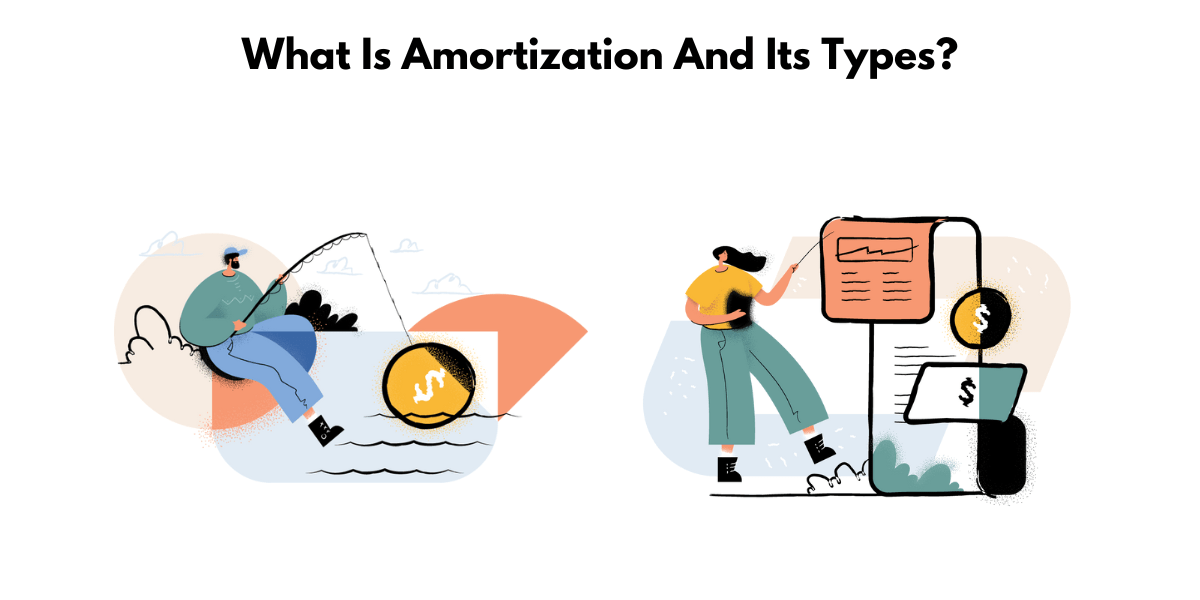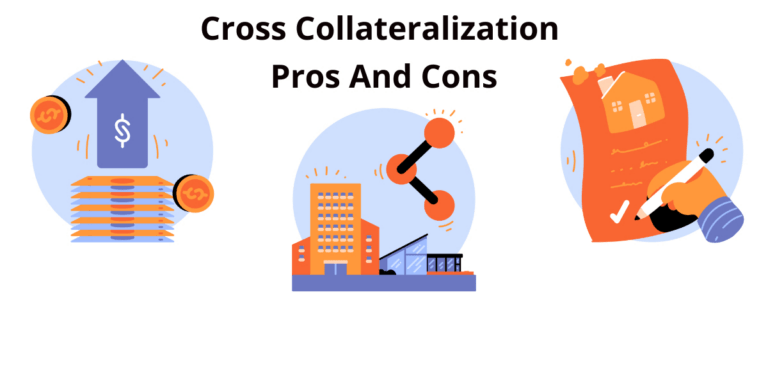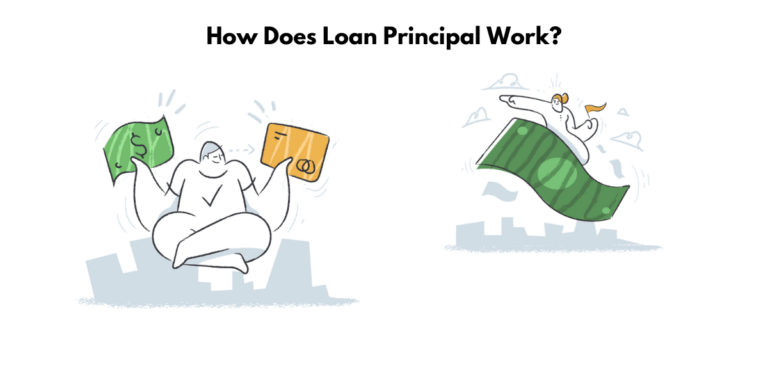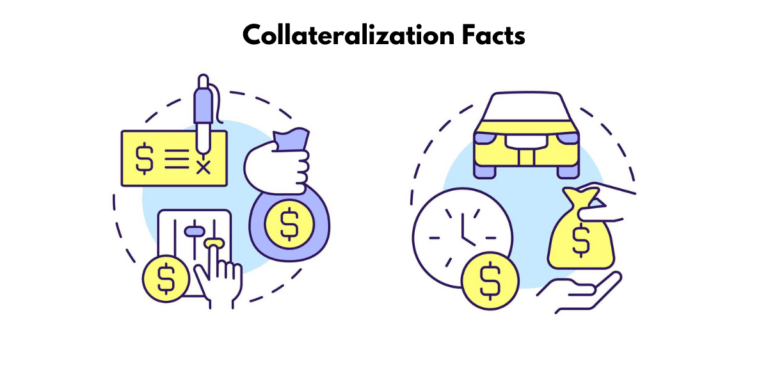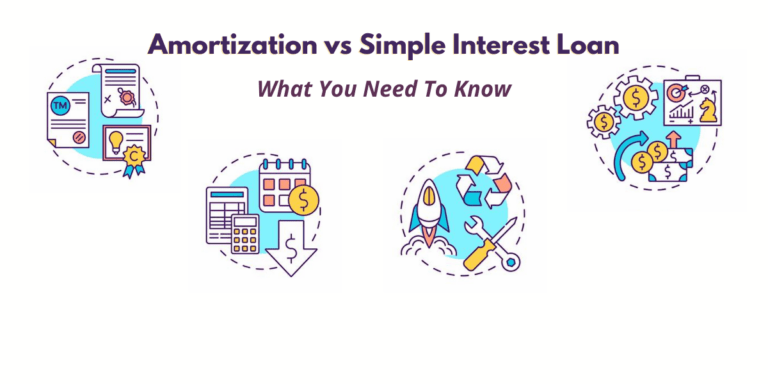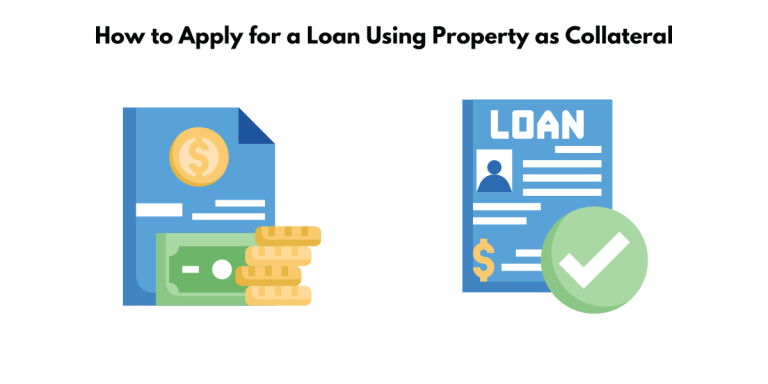What is Amortization? 10 different types of amortized loans
What is amortization?
Amortization is an accounting technique used to spread out the cost or value of an asset, such as a loan or an intangible asset, over time.
It is a process of paying off a debt through regular installments of principal and interest, which are predetermined.
The payments usually remain the same throughout the loan term, but the portion of each payment that goes to principal and interest will change.
Amortization is used to reduce the current balance of a loan and is often calculated with the help of financial calculators, spreadsheet software, or online amortization calculators.
How does loan amortization work?
Amortization is an important concept to understand when taking out a loan.
It involves creating an amortization schedule outlining how each monthly loan payment is broken down between interest and principal.
Knowing how much of each payment goes towards interest, as well as how much goes towards the principal, can help you determine how to pay off your loan best.
- Calculate the monthly payment amount: To calculate the monthly payment amount, you will need to know the amount of the loan and the interest rate. Divide the loan amount by the number of payments to get the monthly payment amount.
- Calculate the payment’s interest portion: Multiply the loan amount by the interest rate. Divide this result by 12 to get the monthly interest amount.
- Calculate the principal portion of the payment: Subtract the interest from the monthly payment amount to get the amount of each payment that will go towards the principal.
- Calculate the remaining principal balance: For each month’s payment, subtract the principal portion from the remaining principal balance.
- Repeat the process: Continue to recalculate the interest and principal portions of the payment and subtract the principal portion from the remaining principal balance each month. The loan will be paid off when the remaining principal balance reaches zero.

The 10 different types of amortized loans
There are 10 different types of amortized loans. We will discuss each of these types in more detail below.
1. Mortgage loans
A mortgage loan is a type of loan used to finance the purchase of a home.
It is typically a long-term loan, often with a fixed-rate and amortization schedule, where the payment consists of both principal and interest.
The lender can adjust the rate on a predetermined schedule, which would impact your amortization schedule.
Mortgage amortization is a financial term that refers to paying off the loan over time through regular installments, with a part of the principal and interest.
Understanding the breakdown of your mortgage payments can help you manage your debt and plan for your financial goals.
2. Home equity loans
A home equity loan is a type of loan that allows you to use the equity in your home as collateral. It is typically a one-time loan with a fixed interest rate and monthly payments.
It is usually amortized over a set period, typically 15 or 30 years.
Your home secures the loan, and the lender can foreclose on the property if the payments are not made.
The interest rate on a home equity loan will depend on your credit score, the loan-to-value ratio of your home, and the loan amount.
The loan is paid back in regular installments over the life of the loan, with each payment including both principal and interest.
The payments start mostly towards interest and slowly shift towards more principal over time.
With a home equity loan, you can use the money for various purposes, such as home improvements, consolidating debt, or other large purchases.

3. Education loans
An education loan is a type of amortized loan. It typically has fixed interest rates, payment terms, and a repayment period.
Education loans are designed to help borrowers finance tuition, educational materials, and living expenses associated with their educational endeavors.
These loans are usually unsecured, meaning they don’t require collateral, and typically offer lower interest rates than other types of loans.
They may also have additional benefits, such as deferred or interest-only payment options.
Education loans are typically paid off over several years, and the repayment terms are tailored to fit the borrower’s financial situation.
The payments are typically based on the borrower’s ability to repay and may include a grace period to give the borrower time to find employment before they start making payments.
4. Credit card debt
When you amortize a loan for credit card debt, it is a loan with a fixed term, fixed rate, and fixed monthly payments.
It works by gradually paying off the loan balance over the payment period, with the interest payments becoming increasingly smaller each month.
Your interest rate is a percentage of your original balance and can vary based on your credit score, credit history, borrowed amount, and other factors.
Amortized loans for credit card debt can help you pay off your debt faster and with less stress than other repayment plans, such as the debt avalanche strategy.
5. Personal loans
Many types of personal loans are available and can be classified as amortizing or non-amortizing loans.
Amortizing loans are paid down over time with regular-level payments.
The most common types of amortizing loans include auto loans, personal loans, mortgage loans, home equity loans, and student loans.
Non-amortizing loans, on the other hand, do not require the loan balance to be paid down to zero.
The most common types of non-amortizing loans include credit cards, loans with balloon payments, home equity lines of credit (HELOCs), and interest-only loans.
You may only need to make the minimum monthly payment for credit and loans that don’t have amortization.
6. Business loans
The different types of amortized loans for businesses include:
- Straight-line: also known as linear amortization, involves equally distributing the entire interest amount throughout the loan term.
- Annuity: in this method, the loan is amortized with equal amounts paid at intervals. This can be further divided into two types – ordinary annuity, where the payment is made at the end of the interval, and annuity due, where the payment is made at the start of each interval.
- Declining balance: this method expedites the process of amortization, with regular interest payments reducing and principal repayment increases. Each payment made is more than the interest, resulting in a lower loan balance and expediting the principal repayment.
- Bullet: in this type, periodic payments only include the interest amount. This results in a large amount to be paid at the end, which leads to complete repayment of the principal.
- Negative amortization is similar to the type seen in real estate, in which the balance amount increases over time and is repaid at maturity.
7. Construction loans
A construction loan is a short-term loan used to finance the building or renovation of a property.
A high-interest rate, a short repayment period, and a balloon payment due at the end of the loan term typically characterize these loans.
The loan amount is usually disbursed in stages as the construction progresses, and the property secures the loan as collateral.
The principal repayment amount usually depends on the property’s value, and the loan is typically amortized over time.

8. Boat loans
A boat loan is an installment loan that is amortized over a set period with fixed monthly payments.
Boat loans often have three-year terms, fixed interest rates, and a fixed monthly payment.
They are usually used for purchasing or refinancing a boat and are typically secured loans, meaning you’ll need to provide collateral.
Characteristics of a boat loan can include:
- Fixed interest rate
- Fixed monthly payments
- Three-year term
- A secured loan (meaning collateral is required)
- Minimum down payment
- Prepayment penalties
- Late payment fees
- Repayment restrictions
- Potential for refinancing
- Possible extra fees, such as closing costs
9. Truck loans
A truck loan is an amortized loan typically paid off over three to five years.
Fixed interest rates, fixed monthly payments, and a predetermined repayment schedule characterize this type of loan.
The monthly payments consist of the principal and the interest, which are paid down slowly at first and more quickly toward the end of the loan term.
Although longer loans are available, it is best to avoid them as they will result in higher interest payments and could leave you owing more than your truck is worth.
10. Yacht loans
Yacht loans typically have longer terms than installment loans and may range from five to twenty years.
They also have higher interest rates than other installment loans and may require a much larger down payment.
In addition, yacht loans often require a minimum loan amount and may also have additional fees such as closing costs, monthly payments, and other costs associated with the loan.
Other features of a yacht loan may include the ability to refinance the loan, the option to make additional payments, and the option to pay off the loan early.
Yacht loans are unamortized or non-amortizing, meaning you won’t have to pay off the loan’s principal over time.
Instead, you must make a large payment at the end of the loan term to pay off the remaining balance.
This type of loan may also require you to make interest-only payments for the first few years, after which you will start making principal and interest payments on an amortization schedule.

Benefits of using amortization in your business
Amortization is an important business tool when managing intangible items and loan principles.
Amortization can help businesses reduce their taxable income, give investors a better understanding of the company’s true earnings, improve future debt planning, and write down the value of intangible assets.
Understanding how amortization works and its benefits can help businesses make informed decisions about budgeting and taxes.
1. Amortization helps to track and account for intangible assets
Amortization helps businesses and investors track and account for the cost of intangible assets over time.
Businesses can tie the cost of their assets by allocating a portion of the cost as amortization expenses in their books and reducing their taxable income over their lifespan.
Amortization also clarifies what portion of a loan payment consists of interest versus principal, which is helpful for tax purposes and future planning.
2. Amortization allows for easier comparison of financial statements over time
Amortization helps compare financial statements by distributing asset value or loan principal over time.
It allows for a better understanding of the true earnings of a company.
It can also reduce a company’s taxable income and tax liability, which benefits both investors and the company.
The amortization process systematically reduces the value of an intangible asset over its useful life, which is in line with the GAAP matching principle.
Additionally, it clarifies what portion of a loan payment consists of interest versus principal, which is useful for deducting interest payments for tax purposes.
These factors help businesses and investors better understand and forecast their costs over time and compare financial statements.
3. Amortization allows for easier comparison of businesses of different sizes
Amortization helps facilitate the comparison of businesses of different sizes by clarifying what portion of a loan payment consists of interest versus principal.
This can help investors and other stakeholders compare the cost structure of different companies and the amount of money being spent or saved on interest.
It also helps businesses better understand their costs over time and make more informed decisions regarding loan repayment.
Furthermore, amortizing intangible assets can reduce a company’s taxable income, resulting in lower tax liabilities and making a big difference for businesses of different sizes.
4. Amortization allows for easier comparison of businesses with different capital structures
Amortization can be used to compare businesses with different capital structures.
It helps to identify the portion of a loan payment that consists of interest versus principal, which can give investors a better understanding of the company’s true earnings.
For example, a company with a longer repayment term may have lower monthly payments but may pay more interest charges in the long run.
On the other hand, a company with a shorter repayment term may have higher monthly payments but can save on interest costs over time.
Additionally, amortizing intangible assets can reduce a company’s taxable income, which can be beneficial for reducing tax liabilities.
In this way, amortization can be used to compare capital structures.
Different companies’ interest payments and overall tax liabilities can be compared to better understand the business’s financial position.
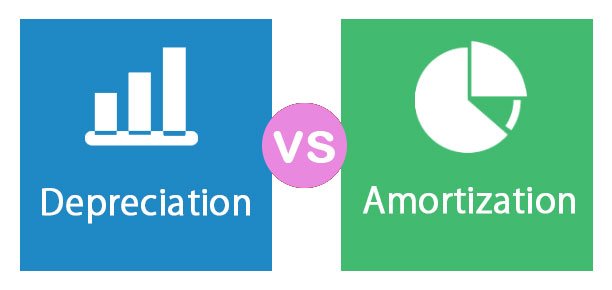
5. Amortization allows for easier comparison of businesses with different depreciation or depletion methods
Amortization helps businesses compare the cost of their assets over time by allowing them to expense intangible assets over their useful lives.
By prorating the cost of an asset over its useful life, businesses can more accurately measure the asset’s value and compare it to other businesses with different depreciation or depletion methods.
Amortization also allows businesses to more accurately measure the impact of the asset on their overall financial performance as they recognize an expense without the associated cash outflow.
This allows companies to plan better for capital expenditures and better understand their operating needs.
6. Amortization makes it easier to identify changes in the value of assets over time
Amortization helps identify changes in the value of assets over time by spreading out the cost or value of an intangible asset over a set period.
This is done by dividing the asset’s initial cost by its useful life or the reasonable time to consider it useful before replacing it.
This allows businesses to tie the cost of an asset to the revenue generated over each accounting period and deduct the costs over the asset’s lifetime.
By amortizing an asset, businesses can accurately measure the gradual loss in its book value, and thus its true value, to help reduce their taxable income.
7. Amortization allows for easier comparison of assets held for resale and assets held for use
Amortization and depreciation are two distinct methods of accounting for the decline in the value of assets over time.
Both are used to determine the actual cost of assets a business holds, though they differ in terms of the type of asset and how the cost is expensed.
When comparing assets held for resale and assets held for use, the amortization can be used to help understand the decline in value of each.
Assets held for resale are typically tangible assets that require depreciation to calculate their decline in value.
Depreciation is a method of prorating the cost of a tangible asset over its useful life and is typically done using a variety of calculations, such as:
- declining balance
- double-declining balance
- the sum of the years’ digits
- the units of production method
On the other hand, assets held for use are often intangible assets that require amortization to quantify their gradual losses.
Amortization is the practice of spreading an intangible asset’s cost over its useful life and is usually done using the straight-line method.
The only difference is that amortization applies to intangible assets while depreciation applies to tangible assets.
8. Amortization helps to identify assets that are being fully utilized
Amortization helps to identify assets that are being fully utilized by breaking down the cost of the intangible asset over its expected period of use.
This process shifts the asset from the balance sheet to the income statement, allowing a better understanding of the asset’s status and utilization.
This is especially helpful for recognizing patents, copyrights, taxi licenses, trademarks, and other intangible assets with a finite use period.
Additionally, amortization can be used for loans to understand better the interest and principal components of a loan payment.
By breaking down the cost of an asset or loan over time, the amortization can help businesses to identify assets that are being fully utilized and adjust their financial management strategies accordingly.
9. Amortization allows for easier comparison of the cost of a business purchase with a business combination
Amortization helps compare the cost of a business purchase with a business combination by providing a structure to spread out the cost of intangible assets over time.
Amortization applies to intangible assets such as trademarks, trade names, copyrights, customer lists, etc., while depreciation applies to fixed tangible assets such as equipment, real estate, and vehicles.
Amortization can significantly reduce a company’s taxable income and tax liability by recognizing expenses in the same period as the revenue they help generate.
It can provide a better understanding of the true cost of a business purchase.
Additionally, loan amortization can provide a better understanding of the real cost of a purchase, as it helps to divide a loan repayment between interest charges and reduce the outstanding principal.
10. Amortization facilitates more consistent treatment of assets across a business
Amortization helps to facilitate more consistent treatment of assets across businesses by allowing the gradual expensing of costs related to intangible assets over their useful economic life.
This gradual expensing helps to ensure that the true value of the asset is reflected in a company’s books.
Amortization of loans also helps ensure that a company can meet its loan obligations consistently and timely by breaking down the loan principal and interest into smaller, more manageable payments.
This helps to reduce the overall financial burden of a loan and makes it easier to budget and forecast the company’s financial obligations.

How to calculate amortization with examples
Amortization gradually reduces an account balance by paying off a loan or intangible asset over time.
To calculate amortization, you must know the loan amount, disbursement date, monthly payment amount, annual interest rate, and repayment period.
Here is a step-by-step guide to calculating amortization and some examples to help you understand the concept.
- Calculate the total amount of the loan multiplied by the interest rate.
- Divide the result of step 1 by 12 to get the monthly interest amount.
- Subtract the interest from the monthly installment amount; the remaining amount goes as the principal.
- Repeat the process for the second month, but start with the remaining principal amount from the first month’s calculation.
- Continue with this calculation until the principal is zero by the end of the loan term.
Example 1:
Let’s say you have a car loan of $15,000 with an interest rate of 3%, and the loan term is five years.
Your minimum monthly payment is $200.
In the first month, the loan amount multiplied by the interest rate is $450.
Divide this by 12 to get the monthly interest amount, which is $37.50.
Subtract this from the fixed payment amount of $200, and you will get the portion of the first month’s payment that goes toward the loan’s principal, which is $162.50.
Example 2:
Let’s say you have a loan amount of $50,000 with an interest rate of 4%, and the loan term is ten years.
The total loan amount multiplied by the interest rate is $2,000.
Divide this by 12 to get the monthly interest amount, which is $166.67.
Subtract this from the fixed payment amount of $500, and you will get the portion of the first month’s payment that goes toward the loan’s principal, which is $333.33.
Following these steps and examples, you can easily calculate amortization and create an amortization schedule.
Amortization is a great tool for managing loan principles and can help you plan for future loans.
- Simplified: How Account Audits Work in Finance & Accounting - November 25, 2024
- What is Amortization? 10 different types of amortized loans - April 12, 2023
- Business and Finance: What is a business debit card and what is it for? - February 2, 2023

